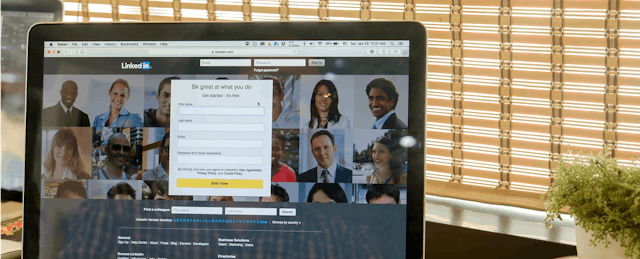Growing a business is like running a marathon. But instead of jogging 26.2 miles, that’s how many dollars—in billions—Microsoft forked over to acquire LinkedIn.
Microsoft’s biggest acquisition to date, the deal “brings together the world’s leading professional cloud with the world’s leading professional network,” Microsoft CEO Satya Nadella told employees.
LinkedIn gives Microsoft access to more than 433 million users of its professional social network. In a presentation to investors, executives from both companies shared ideas for how the two businesses can work together. Their vision includes a central LinkedIn profile that will connect to workplace apps like Office, Outlook and Skype. Nadella offered an example: Office might suggest an expert to connect with to help a user with a task she’s trying to complete. Or the LinkedIn newsfeed could serve up stories relevant to a user’s current tasks.
Microsoft also suggested unleashing machine learning on LinkedIn profiles—Cortana could prep a professional for a meeting with new clients, for instance.
But what does the deal mean for educators? Last year LinkedIn bought online learning platform Lynda.com for $1.5 billion. And earlier this year it introduced “Learning Paths”—packages of Lynda.com courses designed to help people sharpen skills for their current career, or jump into a new one.
Now Microsoft will be able to integrate Lynda videos into its software. In their presentation to investors, the companies note, “In the future, LinkedIn Learning will tightly integrate into Office, enabling users to have a more seamless experience and access to on-demand courses. Recommending the right course at the right time will enable individuals and companies to be more productive and successful—this will transform learning.”
In a memo to employees, LinkedIn CEO Jeff Weiner also noted the potential to sync Lynda’s videos with Microsoft software: “Accelerating our objective to transform learning and development by deeply integrating the Lynda.com/LinkedIn Learning solution in Office alongside some of the most popular productivity apps on the planet (note: 6 of the top 25 most popular Lynda.com courses are related to Microsoft products).”
Part of Microsoft’s decision to pay a 50 percent premium for LinkedIn has to do with the growing market for matching jobs with people who have the right skills or learning experiences, says Ryan Craig, managing partner at University Ventures. Such “competency marketplaces” will pressure colleges and universities to unbundle the degree, he adds.
LinkedIn members use the platform to share badges that indicate professional skills they've learned, such as Salesforce training or Google analytics expertise.
“As employers move from degree-based hiring to competency-based hiring, many will determine that degrees are not a priority or even required for certain jobs. Over the next few years, degrees are likely to become MIA in many job descriptions,” Craig says. “And this will lead an increasing number of students to seek postsecondary education bundles that are shorter, less expensive, and more clearly connected to careers or even specific employers.”


